Azul is an abstract drafting game in which players compete for a variety of colored tiles required to fill in a pattern on their game boards. Winner of several awards, including the 2018 Spiel des Jahres, it has overall received a lot of praise, so let's dive in!
As anyone who has seen a photo or a copy of Azul previously knows, it is lovely; the color scheme is absolutely fantastic. Anyone who has opened the box will know that loveliness without is mirrored by loveliness within. It's hard to imagine how the components could be better - the player boards and circular "factories" are very sturdy, the resin tiles are everything a tile should be, and the cloth bag is made of durable material (also printed with the same color scheme as the inner box! which is a nice touch).
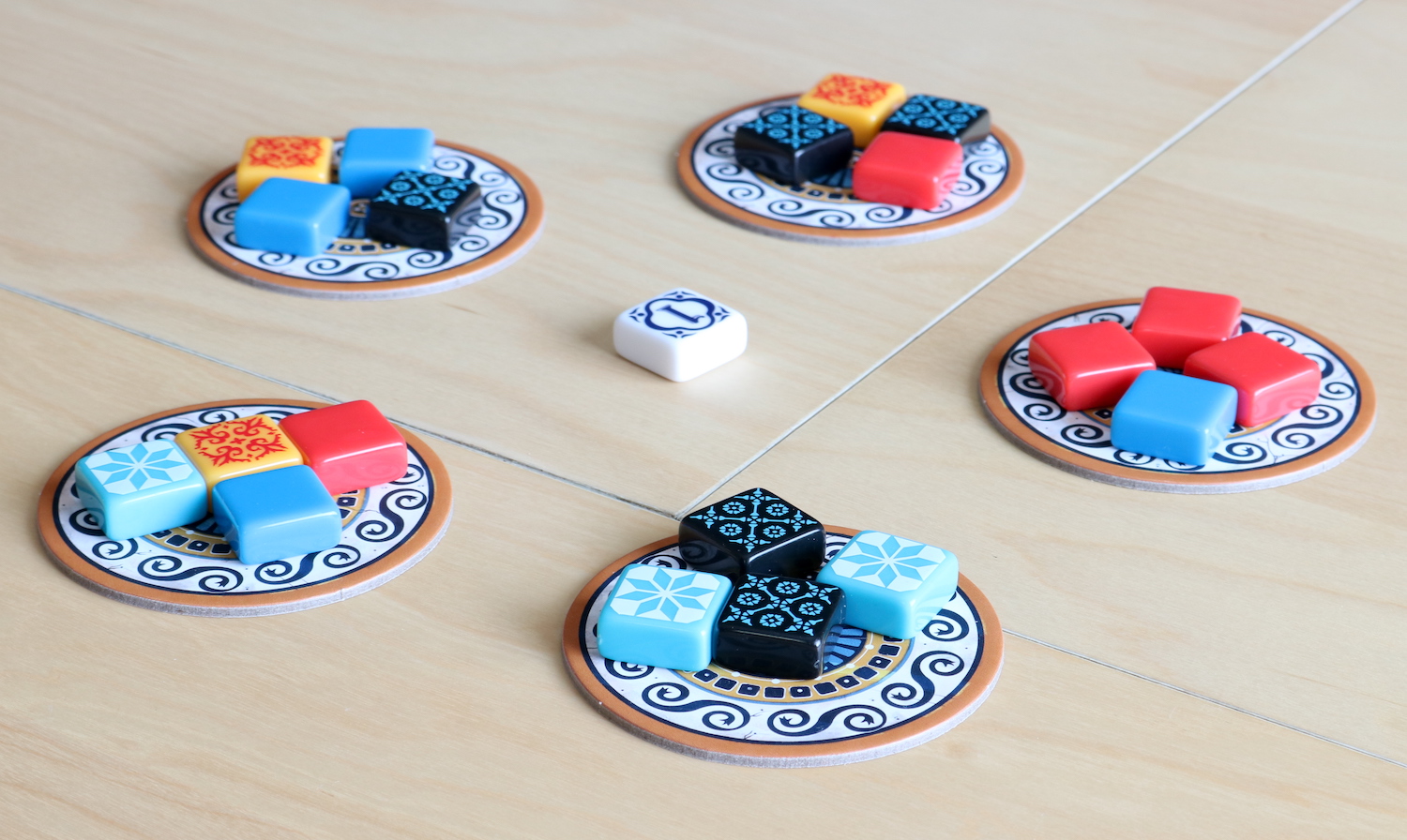
While the game is abstract, the theme does add to the game, rather than just being pasted on top. You are using actual tiles to build an actual mosaic, even if the premise of how the factories and tile placement work feels a little incongruent with how a real factory would operate. A service that has enhanced our enjoyment of many board games, Melodice, has a playlist selected to match Azul's theme; however it didn't really add to our experience in this case.
Gameplay is fairly straightforward. Circular boards are set up in a circle around a central open space. The number of factories varies with the number of players, but each factory has 4 tiles placed on it. Each turn, players choose tiles to add to their boards. Tiles can be chosen from the factories, or from the central area where leftovers accumulate. When choosing tiles, all the tiles of the same color, whether in a factory or from the center, must be taken together. They can only be placed in a single row - if there are too many for the chosen row, they "fall down" and are added to a row of "broken" tiles at the bottom of the player board, deducting points at the end of the round. The first player to choose tiles from the center area must also take the "1" tile, which gets added to the broken tile row (and deducts points during scoring), but also lets that player move first on the following round.
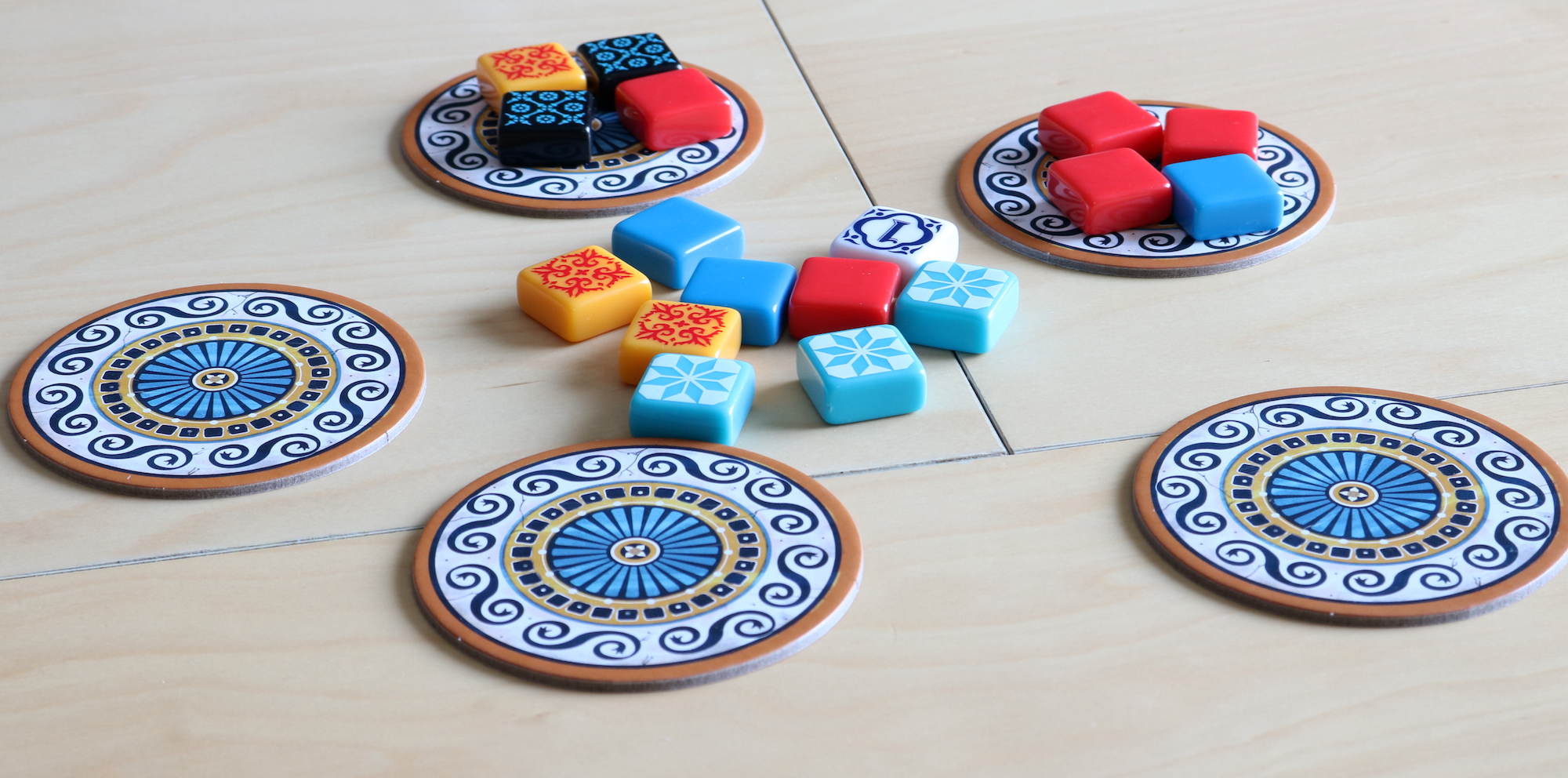
Each round lasts until all the tiles set out at the beginning of the round have been taken. At the end of the round, players fill in their mosaic from the tiles they collected on the previous round. If a row has all the spaces in the tile staging area filled, a tile may be placed in the appropriate spot in that row; the rest of the tiles from that row are discarded. Any rows with a partially filled staging area remain unchanged for the next round.
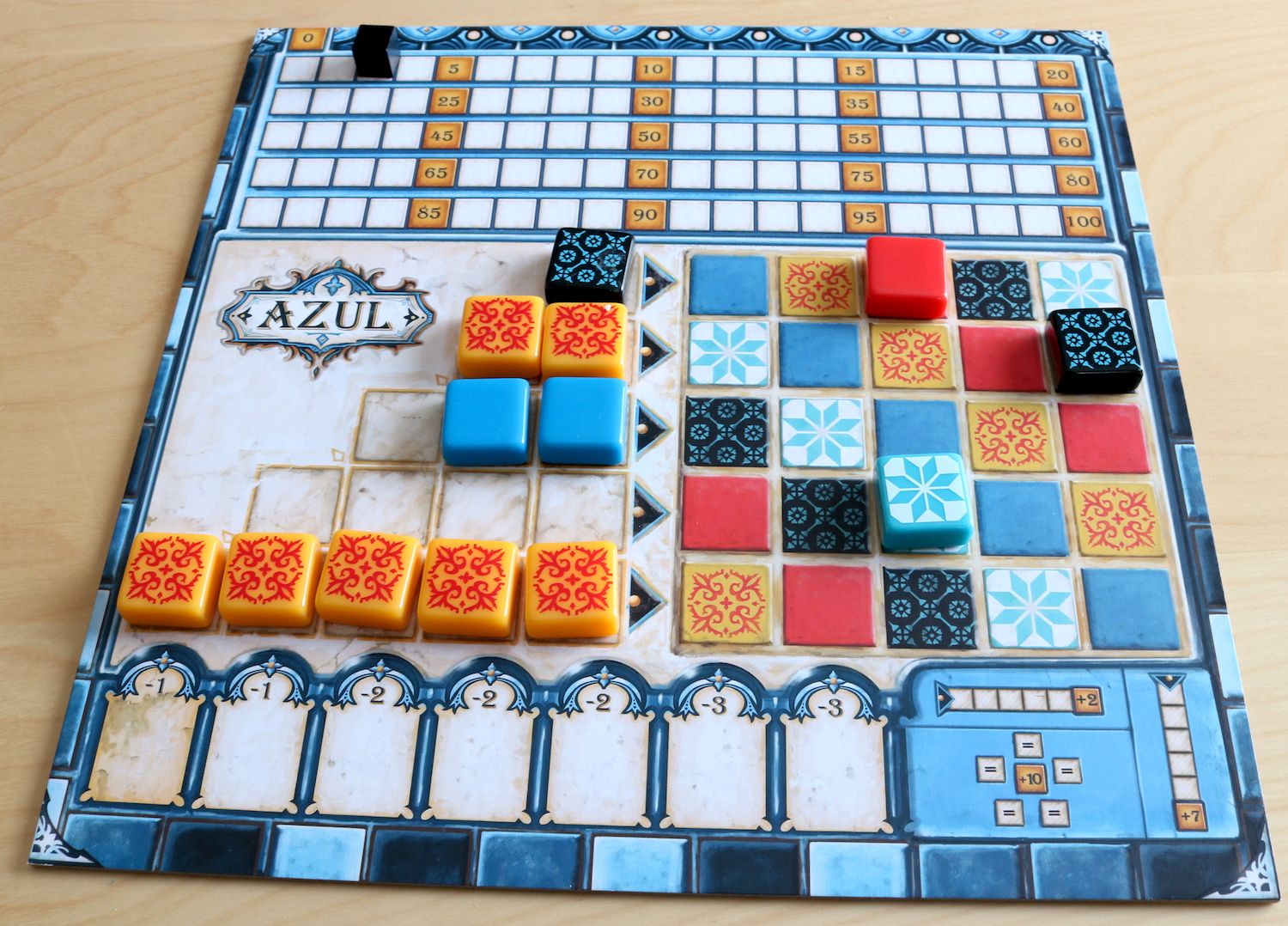
When all tiles that can be moved to the mosaic have been placed, if no players have assembled a complete row, the factories are refilled, first from the bag and then with discarded tiles from the last round, and the cycle starts again.
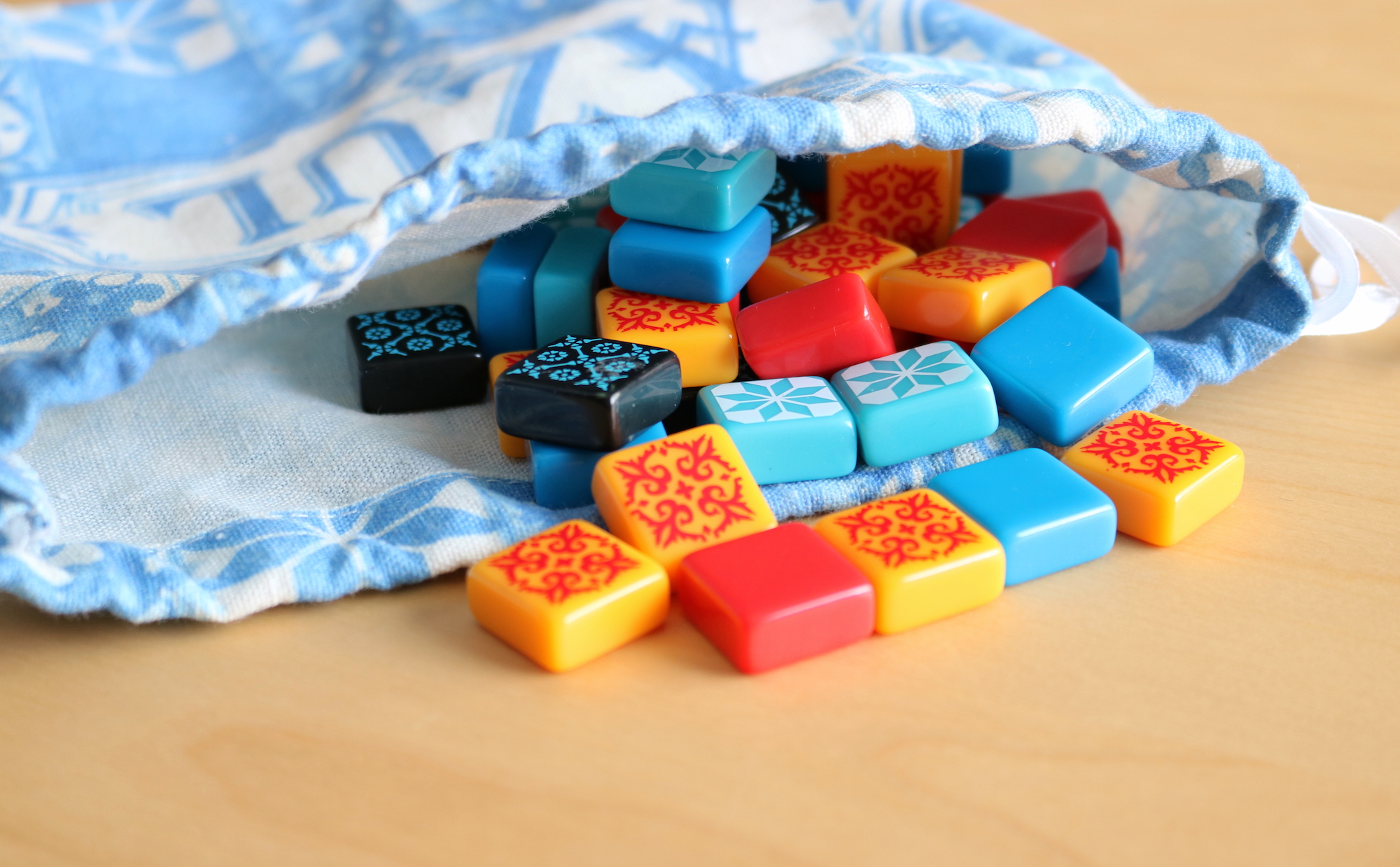
This is one of those magical games with strategy that is deep and yet easily taught. It's hard to figure out the best strategy, but new players will make significant improvements after each game, which always seems to be a mark of a well-made game. Occasionally players will both be going for similar positions which can cause fierce competition for adjacent tiles. While clustering pieces earns points in the short term, it can also make sense to go for the bonuses for columns and having filled all the spots for a particular color - these are worth more points than having a row! Decisions on whether or not to take tiles from the center (particularly in a 4 player game with 9 factories!) can result in large accumulations of tiles in the center - this effect can have a dramatic impact on a player who gets stuck taking 8 tiles of the same color and placing 4 of them in the broken tile row. It's more difficult to affect other players when there are more than 2 playing - but it's still important to keep track of the competitors' player boards, as you may have the opportunity to take a piece they need or force them to take extra pieces. And it's never a fun surprise when someone ends the game before you are ready - keep track of everyone's rows! With so many strategical aspects to focus on, it is no wonder that mastering Azul is more difficult than it first sounds.
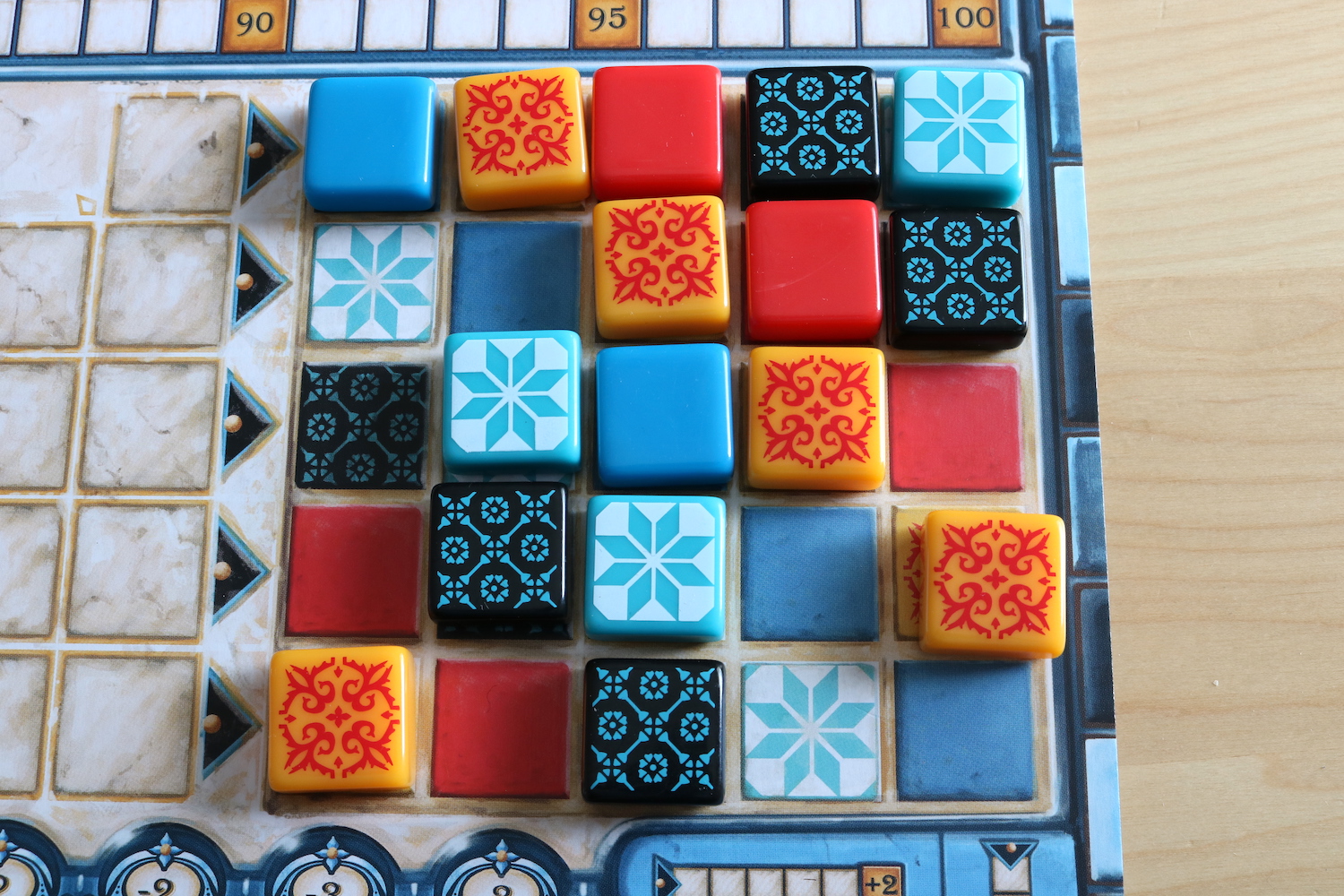
Azul is at its best for us with a group of 4. As many have noted, it's a very tight game and each decision is meaningful. It can be tricky to figure out who is winning, because it's hard to keep track of which bonuses everyone is going to get at the end of the game. The playtime of about 45 minutes is perfect - it lends itself perfectly to being a prelude to a longer game, or to being repeated 2-3 times in an evening.
With only 2 players, the game becomes more cutthroat. Whether this change is an improvement or a detriment will depend on the group, but players who shy away from more direct conflict may find the game stressful. Players have much more influence over what their opponent can choose from, but obviously the interaction is still quite indirect.
There may be an optimal strategy for Azul, but if so, we haven't quite settled on it yet. Most of its replay value comes from the fact that the setup is so variable, and players always need to respond to the current situation - there's no way to know which tiles are coming out of the bag next! However, for players who have truly mastered the basic game, there is a next level, which we haven't tested yet. On the reverse side of the player board, there's a blank mosaic - as you play, you can put tiles anywhere you like, as long as you don't duplicate any tile in a row or column! This feature adds a whole new level of complexity which we honestly haven't begun to fully comprehend, but for the truly dedicated, it's nice to know it's there to keep Azul from going stale.
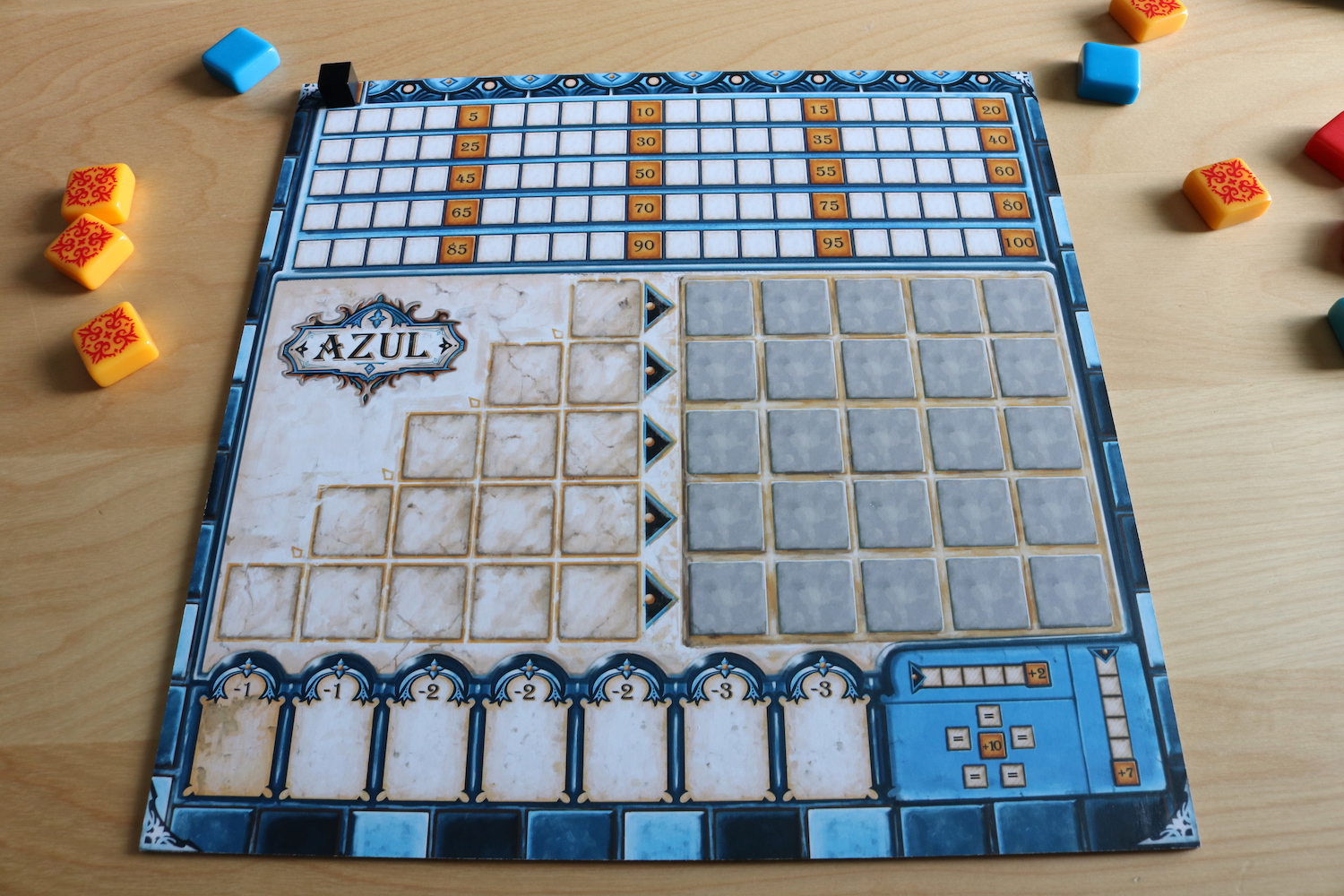
Overall, if you have a 4 player group that includes a mix of gaming interest and experience, and are interested in a medium length drafting game, this game is perfect! For 2 player groups, there are other games that give an intense head to head abstract gaming experience (Hive, for example, or even Whitehall), but if Azul has drawn you in with its interesting theme and gorgeous packaging, or if you want the versatility to have a truly excellent 4 player game, you can't go wrong.
